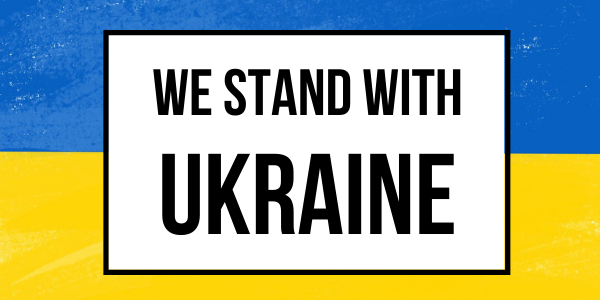Title:Don't Reinvent the Wheel
Author:© Tom Wolfe, author; all rights reserved; excerpts from Out of Uniform: Your Guide to a Successful Military-to-Civilian Career Transition; used with the permission of the author and publisher, potomacbooksinc.com.
Date:January 2014
Source:potomacbooksinc.com
Recently I joined a group of colleagues in a discussion that focused on military to civilian transition, specifically as it relates to finding a job. This group assembled to address the gross disparity between unemployment in this country as a whole and the unemployment rate among veterans and what could be done about it. The data is staggering. According to the U. S. Bureau of Labor Statistics, at the end of 2013 the unemployment rate for veterans was almost 50% higher than the national rate (9.9% vs. 6.7%).
The ideas coming out of the group were all over the place. Although some of them were quite creative, much of what was proposed was nothing more than rehashed conventional wisdom. Regardless, the one thing that stuck with me when the dust settled was a glowing conundrum. On the one hand there are hundreds, maybe thousands, of organizations that openly and vigorously state a sincere desire to hire veterans. On the other hand, there are thousands of veterans in the ranks of the unemployed. There is an obvious disconnect somewhere. How can that be?
I have a theory. I believe this disconnect has two root causes.
One, most military service members lack the necessary tools to conduct a job search. I will use myself as an example. I joined the Navy when I was 18 and got out when I was 27. During those nine years I never had to look for a job. Never had to interview. Never had to write a resume. Never had to put on an interview suit. Never . . , well you get the drift. Talk about being ill equipped! There was no need for these tools in my professional tool kit. Any tools that may have been there were most likely rusty or in severe need of sharpening. Although the VA, DOD, DOL, and other government agency sponsored programs like TAP and ACAP address the problem, the increasing unemployment rate among veterans certainly indicates more must be done. Our separating service members and veterans need not only the appropriate transition tools but also the guidance and instruction on how to use those tools.
Two, even with the best intentions, most civilian employers are not prepared to hire separating military personnel and veterans. They have little understanding of what service men and women actually do in their assignments. What they think they know is often over-simplified or based on stereotypes: fight wars, shoot people, fly jets, drive ships, stand watch, come back from overseas, etc. Additionally, because of the emphasis on bottom line (profit) and accountability to shareholders, those employers frequently focus on immediate results and real-time value-added. Although that approach is valid and defensible, it also works against hiring people out of the military. Here is another personal experience to illustrate.
When I was a partner in a military recruiting firm I was frequently approached by companies that had heard that hiring military personnel was a good thing and although they had never considered it before, they wanted to give it a shot. My first question to them was always: How quickly do you expect those new hires to start adding value? I told them that successful onboarding of a military hire takes time. There is a learning curve and a start-up period. You must make an investment in them that exceeds their paycheck. This transition is not only about assimilation of technical and operational competencies and re-training. There are other gaps to fill, including the need to recognize the cultural, environmental, social, and workplace differences between military and civilian employment. Also, keep in mind that there are frequently mental and physical health leaps of faith involved. Has your hiring plan addressed these issues and can you afford to wait? Will you invest time and money in these hires and wait for a return on that investment? Are your expectations realistic and manageable?
There are exceptions to this, of course. An excellent motor mechanic coming out of the Marine Corps has the skill and experience necessary to do the same job almost immediately for a civilian employer. If you fly helicopters in the Army it will not take long to get up to speed on the NewsChannel 5 Eye in the Sky. A nuclear plant operator in the Navy needs very little start up time to do the same job for a power company. An Air Force meteorologist would be a fine understudy for Al Roker.
So how do you, the reader of this column, address these issues? WORK HARD and WORK SMART.
I suspect you are already on board with the first of the two. Preparing for your job search and interviewing is hard work, physically and mentally. There is much to accomplish: resumes, cover letters, references, wardrobe, networking, research, timelines, sample interview questions, practice interviews, and more. You will work hard at these tasks and you will do all the things necessary to succeed. But hard work alone is not good enough. You also need to work smart. By work smart, I am mostly talking about being selective.
Here is where to start. First, understand that interviewing for a job is a form of sales. No, that does not mean that you have to go find a sales job, although for many of you that might be just the ticket. What I mean here is that when you are interviewing you are selling a product called YOU to a company called YOUR EMPLOYER. Now, as any successful sales person will tell you, it is much easier to fill a customer's existing and acknowledged need with your product than it is to convince a prospective client that the need even exists.
How does that relate to finding a job? Remember that as hard as it may be to convince an employer to hire you, what if you had to first convince that same employer to hire a veteran for the first time? Even if you are successful in educating that employer about veterans and convincing that hiring manager of the potential value added by a veteran, you have yet to convince him or her to hire you. This is where working smart comes into play—you would be much better served to target employers that already value veterans as employees.
So, how do you find these predisposed, military-friendly employers? Easy. Here are four ways.
- Take a look at the companies that advertise or are featured in print and digital media that target the military. YOU are already on their radar.
- Revisit and take full advantage of the government sponsored programs and resources. Are you familiar with www.TurboTap.org? You should be. Pay particular attention to the interviewing events and job fairs sponsored by your local TAP office. The companies in attendance are looking for YOU.
- Find organizations that host job fairs and placement firms that specialize in military-to-civilian transition and employment. These companies have already done the pre-sell and stacked the deck in your favor. Their clients contract with them because they want to hire YOU.
- Take a look at joint private sector initiatives such as the JP Morgan Chase 100K Jobs Mission and the U. S. Chamber of Commerce Hiring our Heroes program. The list of companies that support those initiatives is impressive and they signed up because they want to hire YOU.
Bottom line: be selective, focus, work hard, but work smart. Good Hunting!

